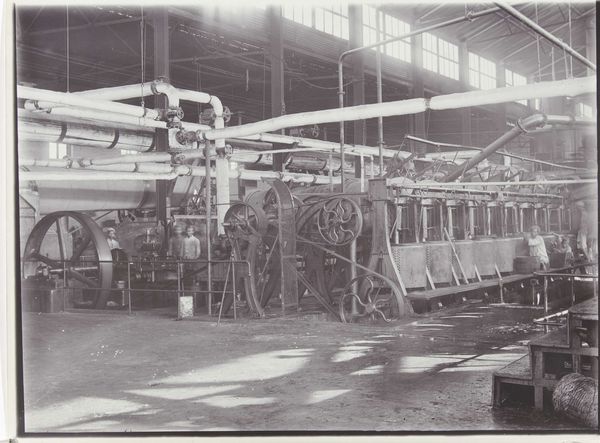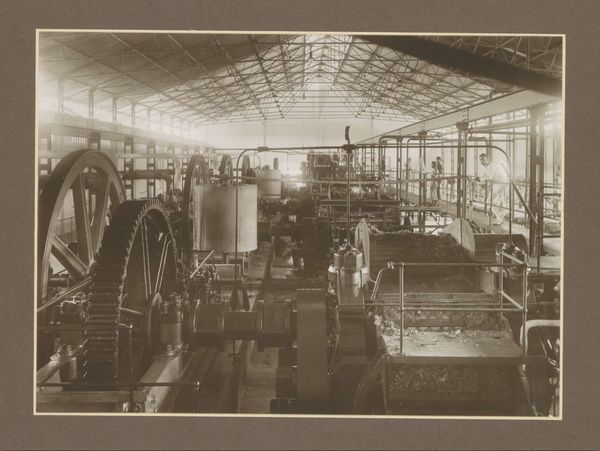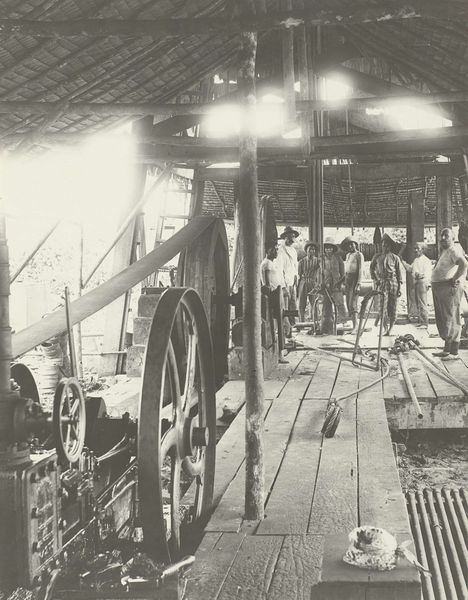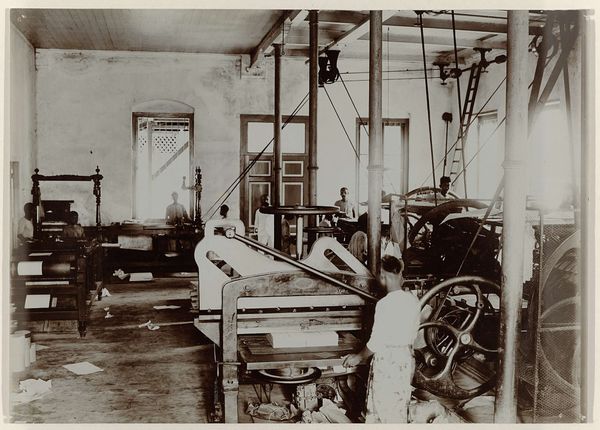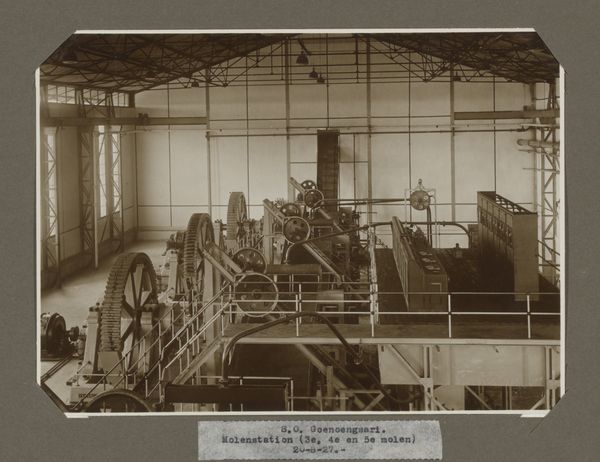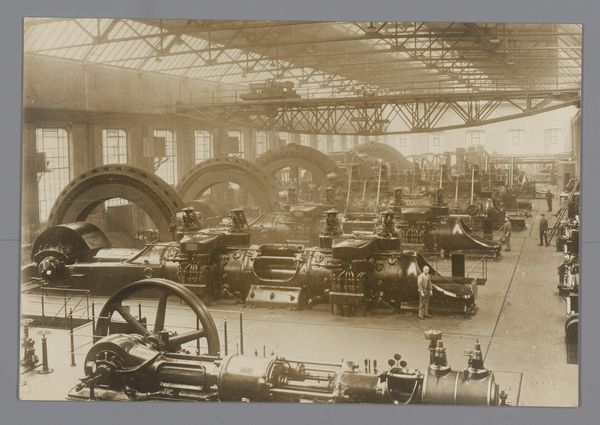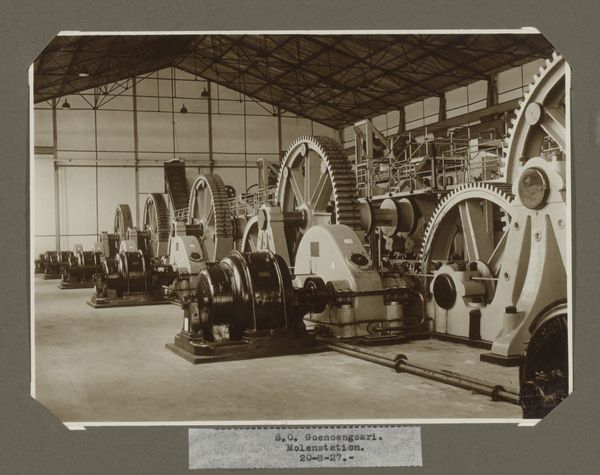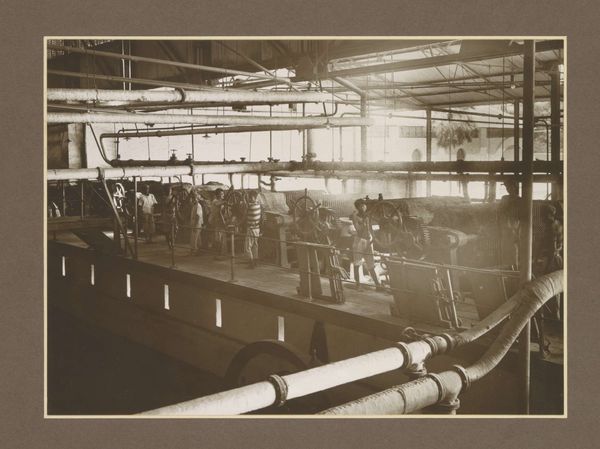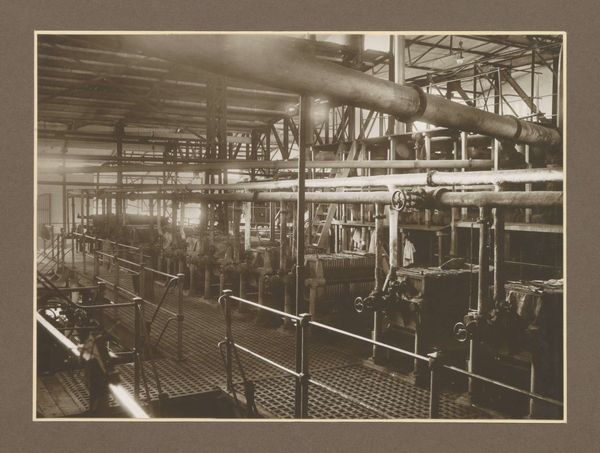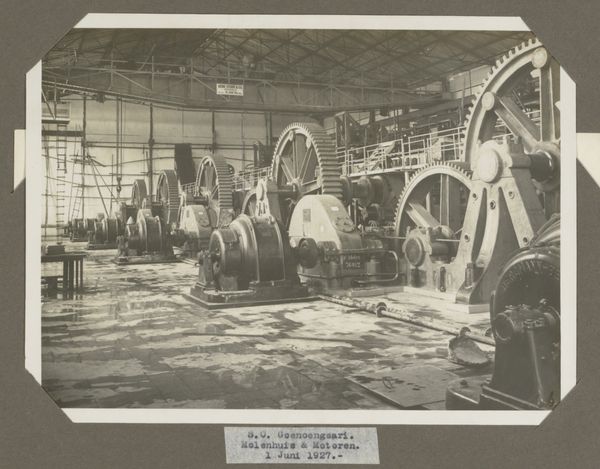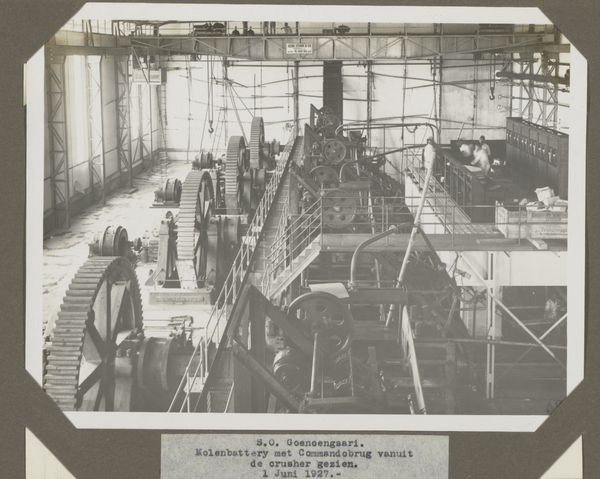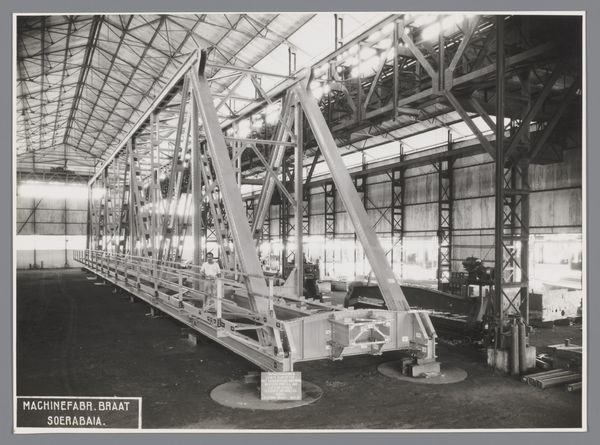
Verwerken van suikerriet in de fabriek van de suikeronderneming Nieuw Tersana, Cheribon, voormalig Nederlands-Indië c. 1890 - 1911
0:00
0:00
photography
#
still-life-photography
#
black and white photography
#
landscape
#
black and white format
#
photography
#
black and white
#
realism
Dimensions: height 168 mm, width 225 mm
Copyright: Rijks Museum: Open Domain
Curator: Looking at this black and white photograph from around 1890 to 1911, titled "Verwerken van suikerriet in de fabriek van de suikeronderneming Nieuw Tersana, Cheribon, voormalig Nederlands-Indië," I immediately sense a scene of industry and human activity. A truly immense and bustling operation. Editor: Yes, the sheer scale of the factory is striking. I'm immediately drawn to the contrast between the almost fragile-looking figures and the hulking machinery. Consider the labor conditions of those processing the raw sugarcane within these factory walls in former Dutch-Indies. Curator: It's true; those men operating the machines almost fade into the background of belts, cogs and sugarcane, highlighting the relationship between human labor and mechanization. This imagery is a statement of industrial processing in its time, and sugar as a resource within the dynamics of colonial Indonesia. Look at the architecture; what sort of significance do those windows carry, so ubiquitous in the history of factories from this era? Editor: Those windows let in so much light, seemingly celebrating or perhaps legitimizing industrial progress through rational, functional design and all this machinery. I see some visual links between these factories, these processing centers, and the way sugarcane juice has evolved into a global, ubiquitous symbol of wealth. Curator: That's insightful, connecting material transformation with its cultural implications. Beyond sugar, those buildings are structures representative of industry, capital, and social labor; all of that and its significance hinges upon the raw sugarcane which is actively fed to the machine. Editor: The image feels very deliberately constructed, almost staged. It conveys a powerful sense of transformation and the complex dance between labor and mechanism within colonial infrastructure. What I find especially compelling is the photo's ability to subtly highlight exploitation. This makes you reflect upon what sort of images we carry of that past, what gets depicted or ignored, celebrated or critiqued. Curator: Right, even the way sugarcane moves, or how those materials are processed and manufactured, conveys a different idea to its audiences. As objects or instruments of historical power. Well, thank you, that's given me something to chew on. Editor: Indeed, the image's complex symbolism encourages much introspection on labor and representation within industrial colonialism, a very complex nexus in visual imagery.
Comments
No comments
Be the first to comment and join the conversation on the ultimate creative platform.
